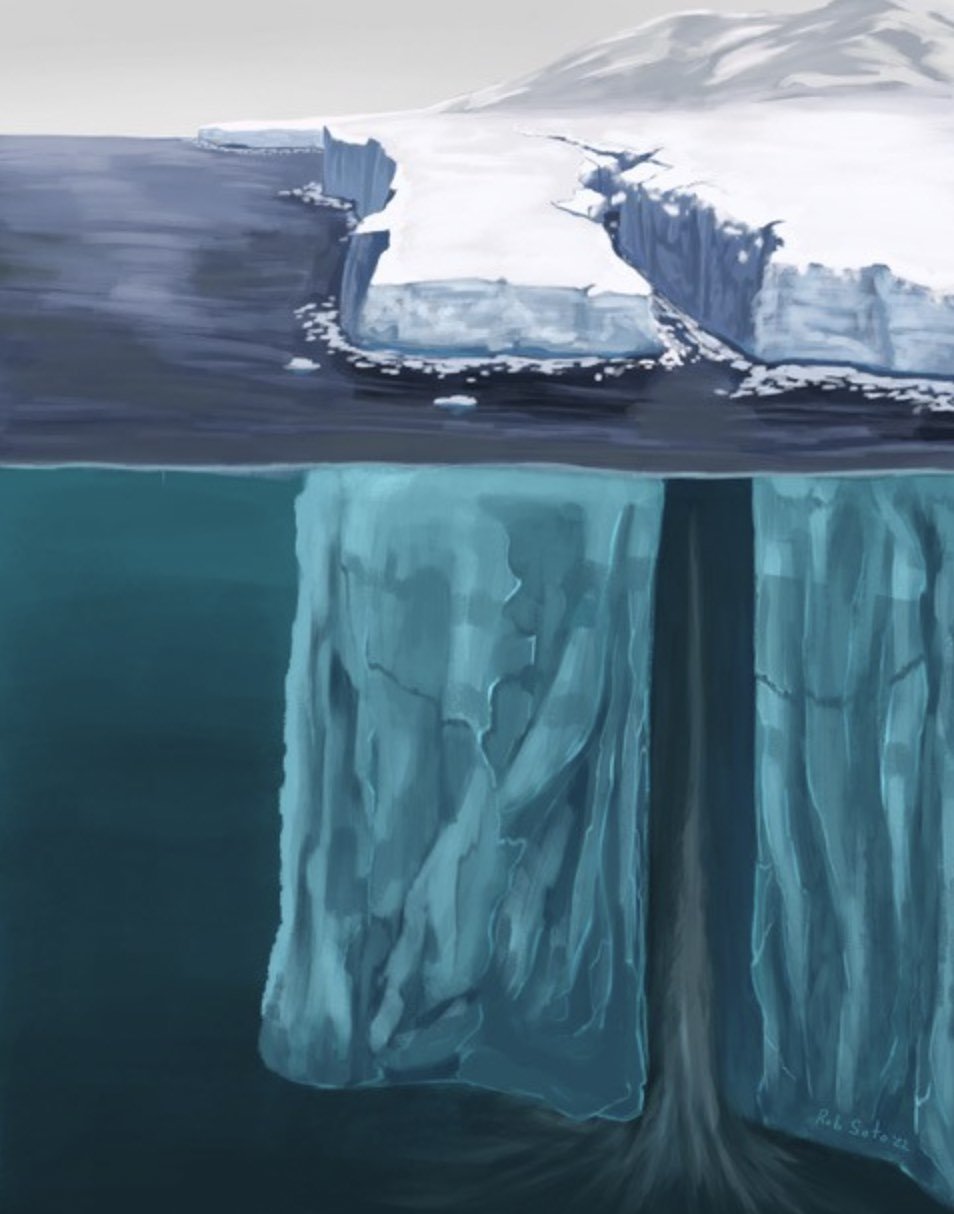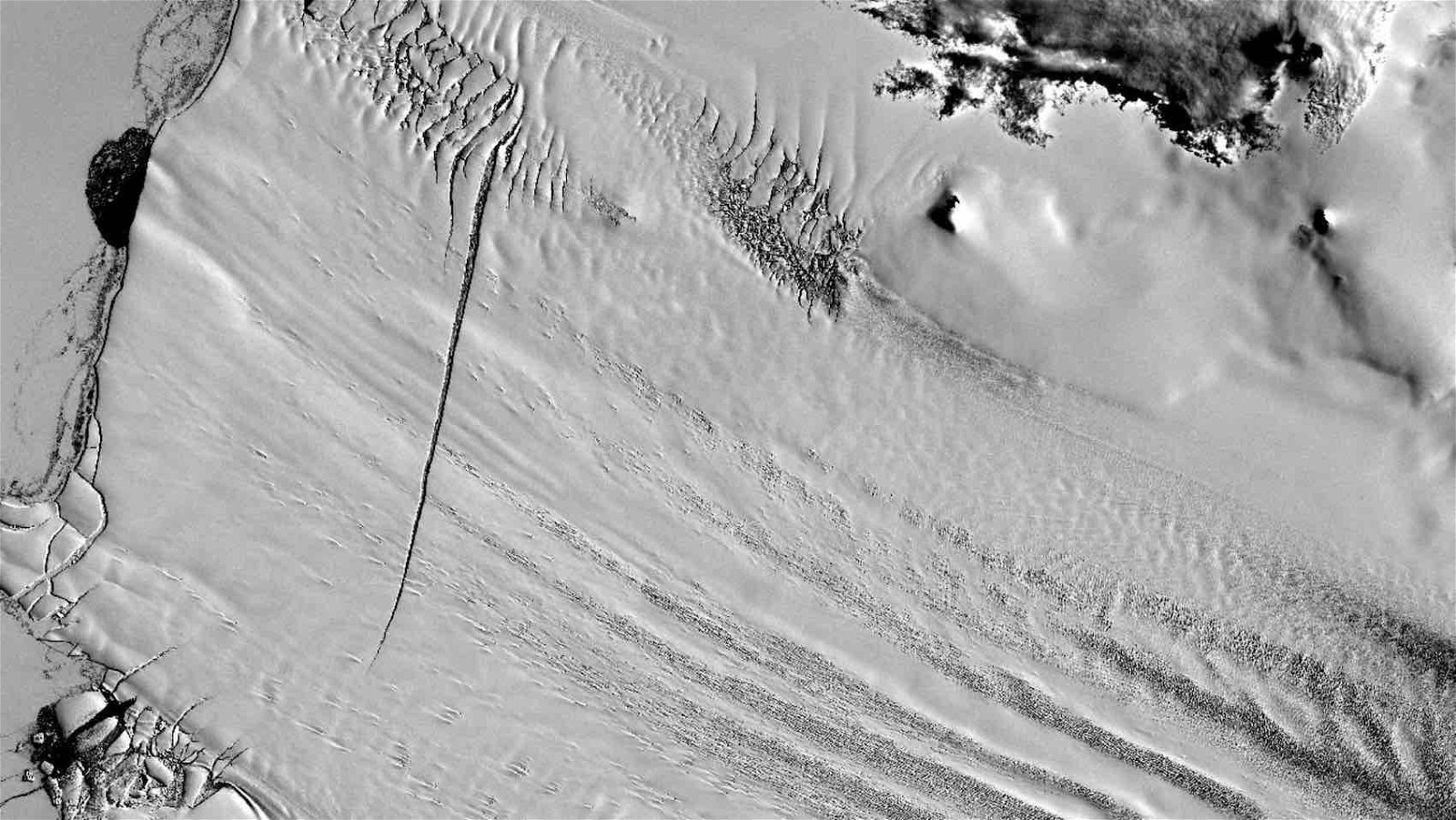The fastest large-scale ice shelf breakage in Antarctica ever observed has been measured by researchers with the University of Washington, according to new findings.
According to newly published findings, a 6.5-mile crack on Pine Island Glacier in Antarctica formed in about 5.5 minutes as ice separated at an astounding 80 mph, covering 115 feet per second.
Pine Island Glacier, which buttresses the West Antarctic ice sheet, is a crucial area of concern on the southernmost continent due to the rate at which it is retreating. Recently, studies involving satellite images spanning several decades helped illustrate the massive changes the glacier has undergone, particularly since the 1990s.
Although these images provide an excellent perspective on changes that occur over longer durations, satellite photos are obtained roughly every three days, meaning that there are gaps in the information available to scientists that can be used to narrow down sudden changes like the massive cracks occurring at Pine Island Glacier.


These cracks, formally known as rifts, occur when a separation that forms in large ice sheets passes through its entirety, cleaving close to 1,000 feet of floating ice that clings to Antarctica’s ice shelves. These rifts occur in advance of a process known as calving, where massive hunks of ice break away from the ice shelf and plunge into the surrounding ocean water, which has become a frequent occurrence at Pine Island Glacier.
Given the amount of ice currently contained at each of the poles, ongoing glacial melt could potentially lead to a substantial rise in sea levels globally. As scientists monitor the dynamics of glaciers over time, one area of focus has become the physics underlying glacier fracturing, an area about which there is currently little data.
Because of this, learning more about the dynamics of glacier fracturing could be vital as warming ocean temperatures continue to impact large quantities of ice at both of the Earth’s poles.
Stephanie Olinger, a postdoctoral researcher at Stanford University who participated in the recent research, said that the massive breakage she and her colleagues studied is the fastest that is known to have been observed,
“This shows that under certain circumstances, an ice shelf can shatter,” Olinger said in a statement. “It tells us we need to look out for this type of behavior in the future, and it informs how we might go about describing these fractures in large-scale ice sheet models.”
Olinger says that the stabilizing role ice shelves play on the greater ice sheet formations on Antarctica is very significant because as ice sheets break down, the speed at which the glacier ice they hold back begins to move can increase very rapidly. The rifting process is also what gives rise to the formation of massive new icebergs as portions of the ice sheets break away and become independent floating chunks.
Another key concern about the location Olinger and her colleagues studied is that Pine Island Glacier is located along the West Antarctic Ice Sheet, a region that is currently changing at a much faster rate than other areas on the southernmost continent.
In their recent study, Olinger and the team paired seismic data with information collected using sensors placed on the ice shelf in 2012, as well as radar data collected by satellites.
Olinger compared their observations of the rift formation her team studied to glass breaking, although noting the role of seawater in holding the space open as large hunks of ice separate. As a rift forms, seawater fills the resulting gap at a constant, but not instantaneous rate, which helps to slow the spread of the rift as it occurs.
Olinger says that a “good, physics-based understanding of the many different processes that influence ice shelf stability” will be vital for scientists going forward to understand the rate and progression of changes in Antarctica’s ice, and her team’s observations represent a step toward making that a reality.
Olinger, along with co-authors Brad Lipovsky and Marine Denolle, published their findings in AGU last month, and their study can be found here.
Micah Hanks is the Editor-in-Chief and Co-Founder of The Debrief. He can be reached by email at micah@thedebrief.org. Follow his work at micahhanks.com and on X: @MicahHanks.

